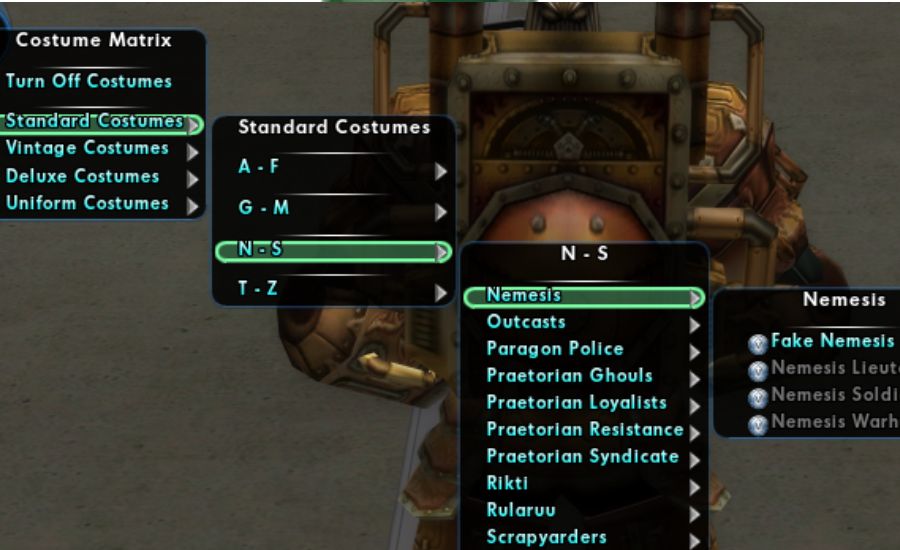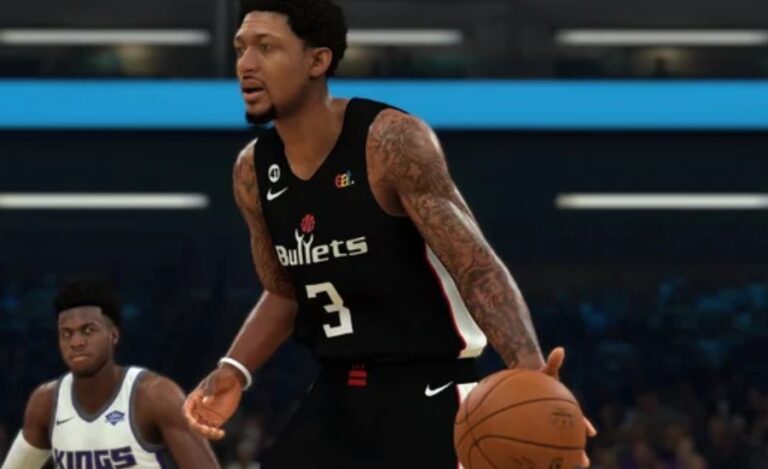City of Heroes Hard Hologram Costumes, Revolutionary & More
Introduction
City of Heroes Hard Hologram Costumes, it revolutionized the MMORPG (Massively Multiplayer Online Role-Playing Game) genre, supplying players the capacity to create precise superheroes and struggle villains within the iconic Paragon City. Its deep customization alternatives and immersive gameplay speedy constructed a committed fanbase, influencing limitless online RPGs that followed.
Today, City of Heroes isn’t simply remembered for its attractive gameplay—it maintains to push the boundaries of gaming era. One of the maximum groundbreaking improvements in current years is the creation of hard hologram costumes, a function this is redefining visual aesthetics and interactivity in digital worlds. But what precisely are those futuristic costumes, and how are they shaping the subsequent era of gaming? Let’s discover this interesting improvement.
What Are Hard Hologram Costumes?
Unlike traditional in-recreation costumes, which rely on textures and polygons, tough hologram costumes function as digital projections that mimic the arrival of stable, physical objects. These costumes introduce a futuristic aesthetic, offering sparkling accents, animated outcomes, and seamless customization options that allow players to tailor their superhero’s appearance with unmatched precision.
Key Features of Hard Hologram Costumes
Dynamic Visual Effects – These costumes task vibrant, animated factors that shift and react to the participant’s moves.
Advanced Customization – Players can modify colorations, patterns, and the speed of visible effects to create a unique appearance.
Efficient Performance – Unlike high-polygon armor, hologram costumes require fewer computational assets, making them visually putting with out burdening gadget performance.
When these costumes first appeared in City of Heroes, they weren’t just every other cosmetic improve—they represented a technological shift in how individual customization worked in MMORPGs.
The Origins of Hard Hologram Costumes in City of Heroes
From its inception, City of Heroes positioned participant creativity at the leading edge. The builders at Paragon Studios knew that superheroes weren’t just about powers—they have been about identity. With a sturdy dress editor already in place, the next logical step was to introduce something sincerely innovative: a dressing up kind that felt futuristic and immersive.
How the Idea Came to Life
Community Demand – Players wanted more than just static textures and armor; they craved animated, energy-based designs that made their heroes feel truly unique.
Technological Advancements – The use of advanced shaders and lighting effects allowed developers to create semi-transparent, glowing elements that mimicked holographic projections.
Artistic Innovation – The design crew at Paragon Studios experimented with different projection patterns to create costumes that seemed futuristic at the same time as keeping top-rated overall performance throughout numerous hardware setups.
When those costumes released as a part of an replace, they have been met with overwhelming enthusiasm, reinforcing City of Heroes’ recognition as a pacesetter in MMORPG customization.
Why Hard Hologram Costumes Were Revolutionary
Gaming has constantly been a mix of storytelling, visuals, and interactivity, and tough hologram costumes accelerated all three components. Here’s why they were a recreation-changer:
1. Unmatched Customization
These costumes weren’t pretty much choosing a shade scheme—they allowed players to create dwelling, moving designs. Whether it become a fit covered with sparkling circuits or armor pulsing with energy waves, the opportunities felt countless.
2. Enhanced Immersion
In a recreation centered around superheroes, holograms healthy flawlessly into the topic. Whether gambling as a tech-based totally hero, a futuristic warrior, or a cosmic entity, these costumes made characters appearance and sense like they belonged in a cutting-edge sci-fi universe.
3. Industry Influence
At a time while most MMORPGs relied on static 3-d fashions, City of Heroes introduced a feature that inspired destiny games to experiment with similar technologies. Today, video games like Destiny 2 and Cyberpunk 2077 comprise power-based armor and dynamic lighting fixtures results—some thing that commenced as an formidable idea in City of Heroes.
4. Community Engagement
The introduction of hologram costumes sparked massive discussions and creativity within the City of Heroes community. Players shared their custom designs, creating a ripple effect of inspiration that kept the game’s forums and social spaces thriving.
5. Accessible Yet Advanced
Despite their impressive visuals, hard hologram costumes were optimized to run on mid-range systems, ensuring that all players could enjoy them without needing high-end gaming rigs.
Modern Applications of Hard Hologram Technology
Although City of Heroes officially shut down in 2012, its impact on gaming and technology continues to be felt. The hard hologram concept has influenced multiple industries, paving the way for advancements in gaming, virtual reality, and even real-world applications.
1. Gaming and Visual Effects
Many modern MMORPGs and RPGs have adopted hologram-inspired designs, using real-time shaders, dynamic lighting, and projected textures to enhance character customization.
2. Augmented and Virtual Reality
Holographic projections aren’t limited to games. AR (Augmented Reality) and VR (Virtual Reality) applications now use light-based designs similar to hard hologram costumes, allowing users to interact with projected visuals in real time.
3. Wearable Technology
Advances in smart clothing and LED-infused wearables reflect some of the ideas first introduced in City of Heroes. We now have garments with programmable displays, bringing a small part of holographic costuming into reality.
4. Entertainment and Live Events
Concerts and live performances now frequently use holographic projections, enhancing stage productions with dynamic, interactive visuals similar to those seen in City of Heroes.
The Future of Hard Hologram Costumes in Gaming
The future of gaming is poised to push customization even further, and hard hologram designs are likely to evolve in exciting ways:
1. AI-Driven Customization
Artificial Intelligence (AI) could allow for auto-generated holographic designs, adapting in real-time to match a player’s fighting style, achievements, or in-game lore.
2. Physics-Based Holograms
Imagine holograms that react to the environment—fluctuating with wind, rain, or combat damage—adding an extra layer of realism to games.
3. Seamless Cross-Platform Use
Future games may allow players to carry their custom hologram costumes across multiple platforms, from PC to mobile to cloud-based gaming services.
4. Integration With Real-World Tech
As metaverse technologies develop, we may see hologram-inspired outfits crossing over from digital spaces into real-world augmented experiences.
City of Heroes: A Game-Changer in Customization and Immersion

The international of MMORPGs (Massively Multiplayer Online Role-Playing Games) has visible many advancements through the years, however few had been as modern as City of Heroes and its advent of hard hologram costumes. These innovative designs increased individual customization to a wholly new level, allowing gamers to craft dynamic, futuristic clothing that stood out in both aesthetics and functionality. Unlike conventional individual outfits, those costumes combined superior visual results with customization options that converted the manner players engaged with their in-recreation avatars.
The Unique Appeal of Hard Hologram Costumes
At their middle, tough hologram costumes in City of Heroes represented a technological jump in character layout. Rather than relying on static textures and polygon-based clothing, these costumes applied superior projection strategies to create fluid, animated visuals. This innovation allowed for sparkling, shifting patterns that replied to man or woman motion, making them sense greater alive than ever before.
Key Features of Hard Hologram Costumes:
Dynamic Visual Effects: Unlike conventional armor or garb, these costumes featured glowing edges, animated energy fields, and fluid-like projections that answered in real-time to movement.
Advanced Customization: Players had big manage over colors, patterns, or even the timing of the animations, ensuring that no heroes looked the same.
Optimized Performance: Despite their excessive-tech look, those costumes were designed to run correctly on numerous gaming systems, making them available to a wide participant base.
At the time in their creation within the mid-2000s, few MMORPGs supplied any such deep level of visual customization. This feature quickly became a defining aspect of City of Heroes and set a new standard for future online games.
The Evolution of Hard Hologram Costumes in City of Heroes
From its inception, City of Heroes prioritized player creativity. The game’s person introduction device turned into already one of the maximum distinct inside the MMORPG area, and the advent of hard hologram costumes took this dedication to the subsequent stage.
How They Came to Be:
Community Demand: Players desired greater than static costume designs—they craved clothing that felt alive, with strength-based outcomes and futuristic aesthetics.
Technological Innovation: Advancements in shader era and lights consequences made it viable to create these holographic designs, giving characters a next-gen look.
Developer Dedication: Paragon Studios ensured that these costumes had been no longer handiest visually lovely however additionally optimized for performance, making them reachable to all players.
As a result, tough hologram costumes have become an iconic a part of City of Heroes, giving players the capability to create truly particular superhero identities.
Why These Costumes Were Groundbreaking
Hard hologram costumes weren’t simply visually surprising—they redefined what become viable in MMORPG man or woman design. Here’s why they made such a lasting impact:
Unmatched Personalization – These costumes allowed for an exceptional stage of customization, letting gamers create totally new seems with lively elements rather than simply converting colorations or styles.
Futuristic Aesthetics – In a game centered round superheroes, the futuristic format of those costumes suit seamlessly, improving the immersive revel in.
Pushing Graphical Boundaries – By using advanced shaders and lighting effects, City of Heroes set a today’s benchmark for graphical constancy in MMORPGs.
Fostering Creativity – The advent of hard hologram costumes sparked a wave of innovative expression within the network, leading to shared designs and inspiring similarly customization.
Accessibility and Optimization – Despite their complexity, those costumes have been designed to run easily on mid-tier gaming systems, making sure that all players could experience them.
Even after the legitimate servers of City of Heroes shut down in 2012, the legacy of those costumes lived on, influencing different video games and industries.
The Lasting Influence of Hard Hologram Costumes
While City of Heroes is not lively, the standards behind its tough hologram costumes hold to shape present day gaming, augmented fact, or even wearable era.
Gaming Evolution: Many cutting-edge games, consisting of Fortnite and Final Fantasy XIV, have integrated dynamic person effects inspired by means of City of Heroes.
Augmented & Virtual Reality: The technology behind holographic projections has found a home in AR and VR applications, enhancing immersive experiences.
Wearable Tech & Fashion: The idea of light-reactive and dynamic clothing has been explored in real-world fashion, with LED-based wearables gaining popularity.
Entertainment & Live Events: Holographic visuals have become a staple in concerts and performances, taking inspiration from gaming aesthetics.
Future of Holographic Designs in Gaming
As gaming technology advances, the potential for even more detailed and interactive costume designs continues to grow. Here are some trends to watch:
AI-Powered Customization: Future games may integrate AI to create personalized holographic designs based on player behavior and style.
Ultra-Realistic Graphics: With engines like Unreal Engine 5, holographic costumes could become even more detailed and lifelike.
Cross-Platform Integration: Players may soon be able to carry their custom holographic outfits across different gaming platforms, from PC to console and even mobile.
Empowering Heroes Through Digital Fashion
One of the standout elements of hard hologram costumes become their capacity to blend era with self-expression. Female heroes, for example, could design outfits that balanced beauty and electricity, taking into account customized seems that resonated with their character’s identification.
Beyond aesthetics, these costumes played a role in storytelling. Players may want to craft looks that meditated their hero’s adventure, aligning their designs with their backstory, persona, and task.
Community Creativity and Expression
The effect of hard hologram costumes extended past the sport itself. The City of Heroes community frequently held fashion shows and layout competitions, celebrating the most creative and visually lovely clothes. These activities fostered a feel of camaraderie and pushed the bounds of what become possible within the sport’s customization gadget.
By encouraging gamers to proportion their designs, City of Heroes created a space where inventive expression thrived. This way of life of creativity has considering influenced different online video games, proving that virtual fashion can be just as enticing and meaningful as conventional gameplay mechanics.
Final word:
City of Heroes revolutionized the MMORPG genre with its deep character customization, immersive gameplay, and innovative hard hologram costumes. These futuristic outfits were more than just a visual upgrade—they symbolized a major shift in digital fashion and interactivity. By allowing players to create dynamic, glowing, and animated designs, these costumes redefined personalization in gaming. Even though City of Heroes shut down in 2012, its legacy continues to influence modern games, augmented reality, wearable tech, and entertainment. The introduction of hard hologram costumes was a game-changing innovation that showcased the power of creativity and technology in shaping the future of virtual experiences.
Key Facts from the Article:
- Game Launch and Impact:
- City of Heroes launched in 2004 and was a groundbreaking MMORPG with extensive character customization.
- It influenced many future RPGs and online multiplayer games.
- What Are Hard Hologram Costumes?
- Unlike traditional polygon-based outfits, these costumes used digital projections to create a futuristic, glowing, and animated look.
- They offered dynamic visual effects, advanced customization, and optimized performance.
- Origins and Development:
- Introduced due to community demand for more advanced, animated costumes.
- Used advanced shaders, lighting effects, and energy-based designs.
- Developed by Paragon Studios to enhance immersion without overloading system performance.
- Why They Were Revolutionary:
- Unmatched Customization: Allowed players to create unique, moving designs.
- Enhanced Immersion: Fit perfectly into the sci-fi superhero theme of the game.
- Industry Influence: Inspired modern games like Destiny 2 and Cyberpunk 2077.
- Community Engagement: Sparked creativity, with players sharing and competing in design showcases.
- Performance Optimization: Provided high-end visuals without requiring top-tier hardware.
- Modern Applications and Legacy:
- Gaming: Many modern MMORPGs and RPGs use hologram-inspired visuals.
- Augmented & Virtual Reality: AR/VR tech has adopted holographic projections for real-time interactions.
- Wearable Technology: Smart clothing and LED-infused outfits mimic hard hologram designs.
- Live Entertainment: Holographic projections are now common in concerts and stage performances.
- Future of Holographic Costumes in Gaming:
- AI-Powered Customization: Future designs could adapt to player behavior.
- Physics-Based Holograms: Costumes may react to environmental changes like wind and combat.
- Cross-Platform Integration: Holographic costumes could be used across multiple gaming platforms.
- Metaverse and Real-World Integration: Virtual fashion may merge with real-world applications.
- Community Creativity and Expression:
- City of Heroes players embraced hologram costumes through fashion contests and design showcases.
- This culture of creativity set a precedent for digital fashion in gaming.
Even though City of Heroes is no longer an active MMORPG, its impact remains evident in today’s gaming industry. The concept of hard hologram costumes continues to push the boundaries of character customization, proving that digital fashion is a powerful tool for self-expression in virtual worlds.
Read More Information About Game At incrediblestreet.com


